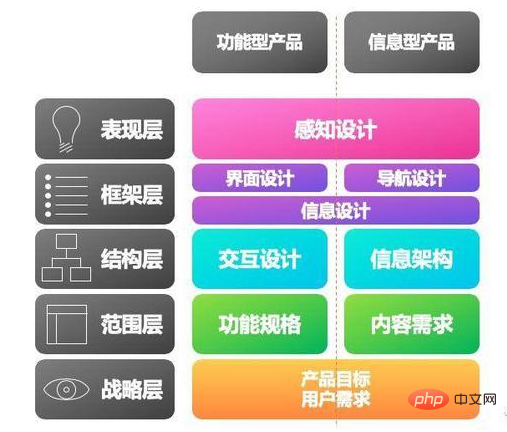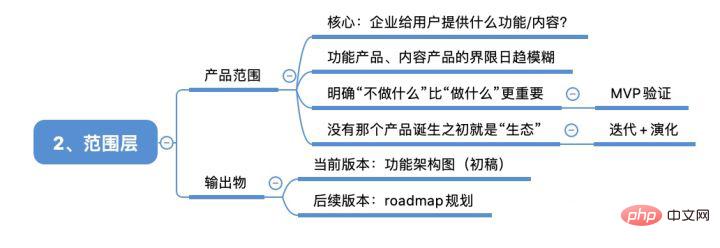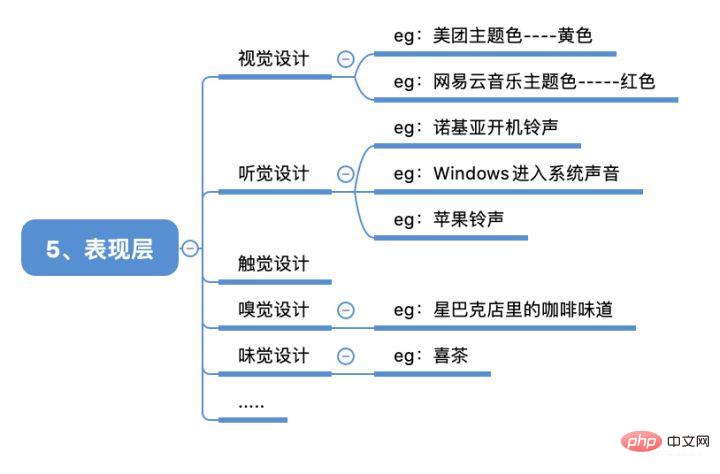
Five elements of user experience: 1. User needs, what users and operators want to get from this product respectively; 2. Scope of functions, what functions does this product have; 3. Process design, which can be divided into interaction design There are two major parts: interaction design and information architecture. Interaction design describes "possible user behavior", and information architecture focuses on how to express information to users; 4. Prototype design, which determines where interactive elements such as a certain section or button should be placed on the page. ; 5. Perceptual design is bringing content, functionality, and aesthetics together to produce a final design that meets all goals at other levels.

The operating environment of this tutorial: Windows 7 system, Dell G3 computer.
User Experience (UE/UX for short) is a purely subjective feeling established by users in the process of using a product. But for a well-defined user group, the commonalities in user experience can be recognized through good design experiments. The development of computer technology and the Internet is changing the form of technological innovation. User-centered and people-oriented are getting more and more attention. User experience is therefore called the essence of the Innovation 2.0 model.
What are the five elements of user experience:



1. Strategy layer
The strategic layer is what users and operators want to gain from this product.
2. Scope layer (Scope)
The scope layer refers to what functions this product has and what this product can do.
3. Structure layer (Structure)

After collecting and prioritizing user needs, you need to combine these scattered pieces into a whole. This is the structural layer: creating the relationship between product functions and content. .
The structural layer is divided into two major parts: interaction design and information architecture.
Interaction design is: describing "possible user behaviors" and defining "how the system cooperates and responds" to these user behaviors. Don’t let users adapt to the product, but let the product and users adapt to each other and predict each other’s next steps.
Information architecture is: focusing on how to express information to users, focusing on designing organizational classification and navigation structures to make it easy for users to find.
Interaction design should include at least conceptual models and error handling.
There are two classification systems for information architecture: top-down and bottom-up. Its structure can have hierarchical structure, matrix structure, natural structure and linear structure. Generally speaking, websites are a combination of the above structures, with one structure as the main structure and other structures as supplements.
1) Hierarchical structure
is also called a tree structure or a hub-and-spoke structure, that is, there is a parent/ between a node and other related nodes. sub-level relationships. This structure is the most common.
2) Natural structure
does not follow any consistent pattern and is suitable for exploring a series of topics that have unclear relationships or are constantly evolving, such as encouraging users to explore freely some entertainment websites. But if the user needs to rely on the same path to find the same content next time, it is not suitable.
3) Matrix structure
usually helps users who come with different needs, so that they can find what they want in the same content, such as : Users can choose to browse products by color or size.
4) Linear structure
is often used for small-scale structures, such as single articles or special topics; large-scale structures are used to limit those that need to be presented Content order is critical to applications that meet user needs.
4. Frame layer (Skeleton)

The frame layer determines interactions such as a certain section or button Where on the page the element should be placed. A large number of requirements have been formed in the structure layer. In the framework layer, we need to further refine these requirements and determine the detailed interface appearance, navigation and information design to make the obscure structure realistic.
When designing the content of the framework layer, we must follow two principles: follow the user’s daily usage habits and appropriately use metaphors in life.
The framework layer includes three aspects: interface design, navigation design and information design.
Interface design provides users with the ability to do certain things. When designing an interface, choose appropriate elements so that users can see the most important things at a glance.
Navigation design provides users with the ability to go somewhere. When doing navigation design, you need to provide jump methods between web pages, convey the relationship between elements and content, and convey the relationship between content and pages.
Information design is about communicating ideas to users. Information design is the bringing together of various design elements to reflect users' thinking and support their tasks and goals. Including visual, grouping and other aspects.
5. Presentation layer (Surface)

The presentation layer is everything that the user can see. The size of the font, the color of the navigation, and the overall feeling. At this level, content, functionality, and aesthetics come together to produce a final design that meets all the goals of the other levels.
Successful interface designs have two characteristics:
1) They follow a smooth path. Users feel smooth during browsing and will not be hindered.
2) Provide users with some possible "guidance" for effective choices without scaring users with too many details.
For more related knowledge, please visit the FAQ column!
The above is the detailed content of What are the five elements of user experience?. For more information, please follow other related articles on the PHP Chinese website!